If you regularly use LED lighting products such as LED light strips, LED bulbs, night LED lights, etc. you may have noticed that these lights shine very brightly.
Table of Contents
Even though bright lights can be very useful, in a lot of ways the glaring nature of the light can be very harmful as well.
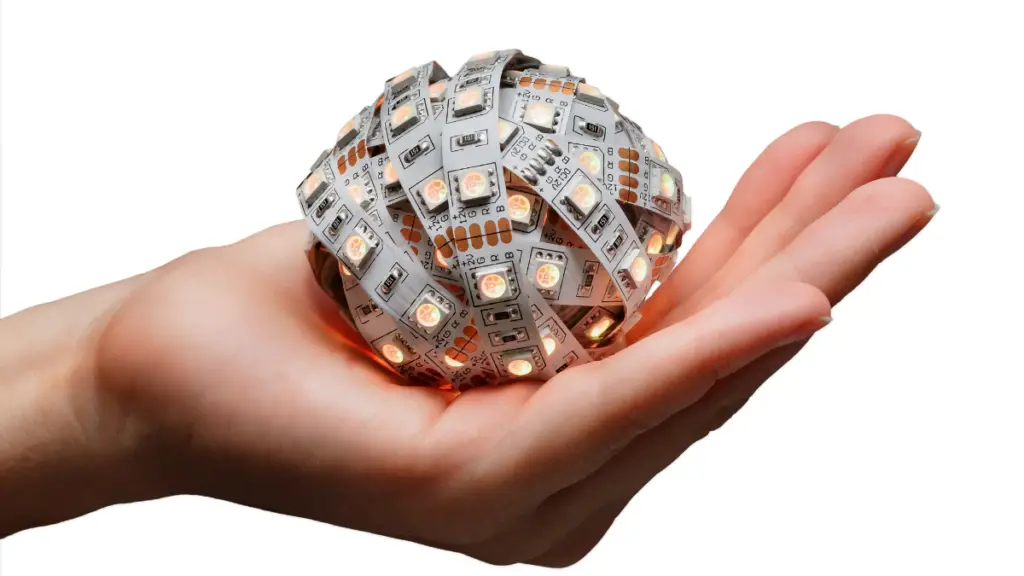
Some LED lights on their own act very similar to spotlights, as their illumination tend to be focused on one point and not very ambient.
So if you’re looking to increase the ambient nature of your LED lights or just want to tone down their intensity of them, our guide on how to soften LED lights just might provide the right solution.
Why is LED Light Bright?
Compared to traditional incandescent or fluorescent lights, LED lights are able to produce a lot more light energy from the same amount of electricity, causing them to shine brighter.
LED technology is extremely efficient. Whereas traditional bulbs would lose a lot of energy due to heat, LEDs generate very little heat. This additional saved energy causes the lights to shine much brighter.
Why Should Soften LED Lights?
As mentioned earlier, the extremely bright nature of LED lights can be harmful to human eyes.
Research has shown that long exposures to lights with high brightness can cause temporary or even permanent damage to your retina. Such damage can affect your eyesight.
In addition, prolonged exposure to bright lights can contribute to disorders like headaches, migraine, increased blood pressure, etc.
Besides the biological aspects, a harsh and spotty LED light can imbalance the ambient nature of lighting in your room. When you’re lighting up a room, ideally you’d want the light to be scattered and spread evenly throughout the room.
How To Change Color Temperature of LED Lights?
The color temperature of light basically indicates the presence of red or blue undertones in predominantly white light. Lights with red-orange undertones are said to be warm colors, and lights with blueish undertones are said to be cooler colors.
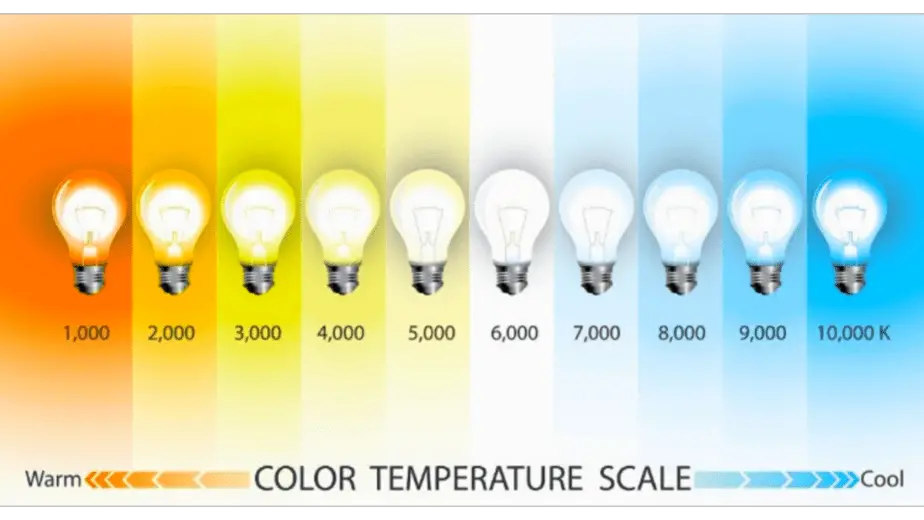
The color temperature of white lights is expressed by using the Kelvin Color Temperature Scale, where the lights can be rated anywhere from 0K to 10000K. Temperatures of up to 5000K are warmer temperatures and temperatures above 5000K are known as cooler temperatures.
Even though close temperatures such as 2700K and 3000K or 3000K and 4000K may not be differentiated through the naked eye, each temperature has its own advantages and disadvantages.
13 Ways on How to Soften LED Lights
1. Using Dimmer
Using a dimmer is definitely the most convenient method for softening LED lights. Dimmers that are widely available in the market basically replace your light switch, and they allow you to control the brightness of your lights.
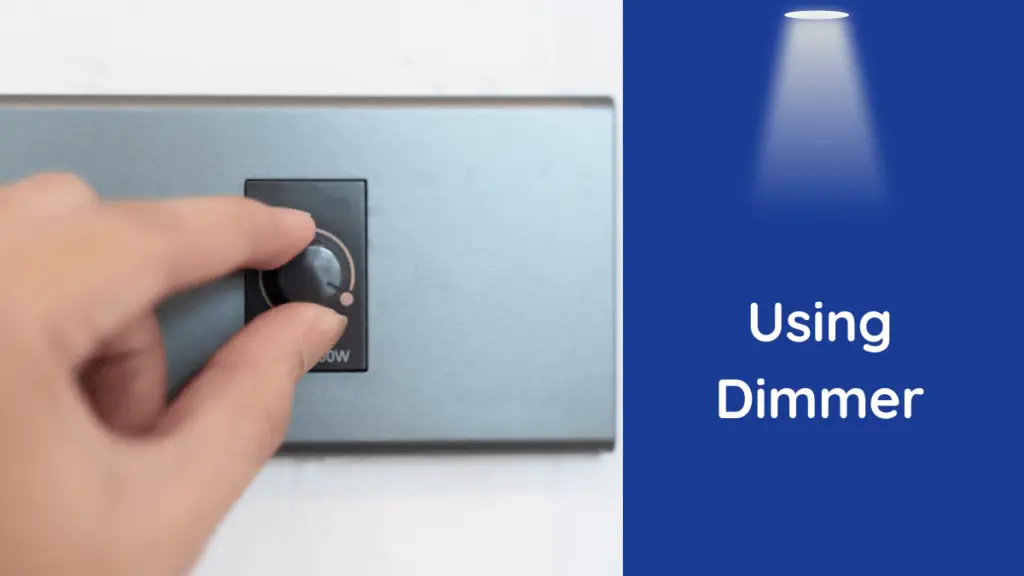
Some smart LED lights are compatible with your smart devices, meaning that you can even dim them using your smartphone.
However for dimmers to work, you need to be using a light that is dimmable.
2. Using a Diffuser
Diffusers are translucent covers that go over light fixtures in order to soften them from shining directly at one spot. In addition to softening, diffusers also do a very good job of increasing the ambiance of the lights.
Diffusers are commonly seen in large office spaces and other industrial areas.
3. Placing a Lampshades
If you have an LED light that’s not fixed to a wall or a fixture, using a lampshade is also an effective solution. A lampshade does a good job of directing light from your eye line as well as creating ambient lighting.
4. Using Filter Shade
Filters are transparent colored glasses or other mediums that can go over lights or camera lenses. Filters are widely popular if you want to shine a certain colored light on the desired areas.
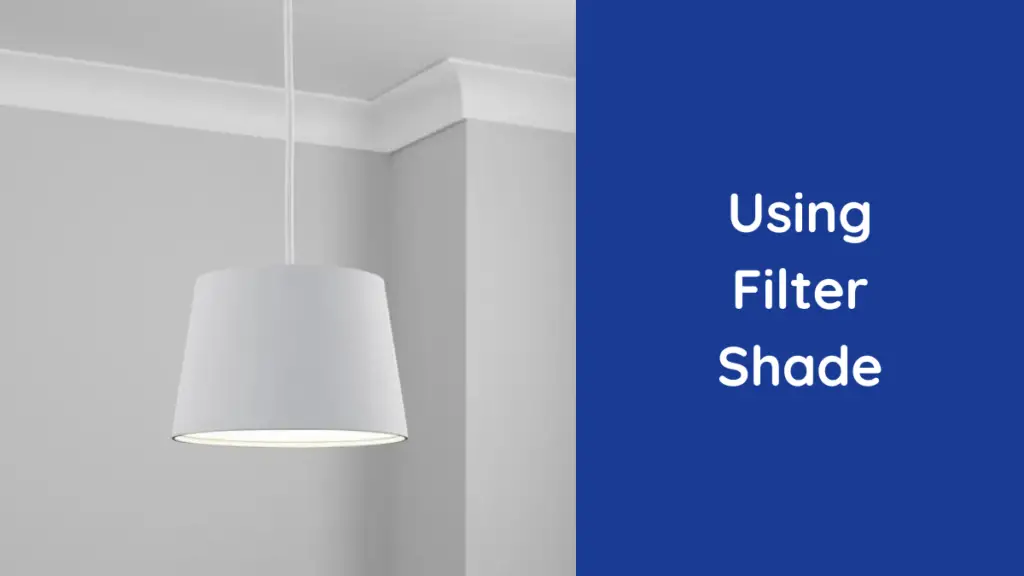
For how to soften LED lights, consider using dark-colored filters as they will do an even better job of dimming the brightness of the light.
5. Changing Color Temperature
There are various ways available to change the color temperature of the light you’re using.
Cooler or blueish lights tend to affect your eyes more, so it’s a good idea to switch to a warmer color temperature such as 4000K or 5000K light.
6. Right Alignment
For lights that are focused on a smaller area, consider changing the direction or location of the light altogether.
From our experience and knowledge, place the lights high up in a corner of the room that is not in your field of vision. This way, you get maximum lighting and ambiance without causing irritation to your eyes.
7. Using a Reflector
Reflectors are commonly used in photography and cinematography. Instead of shining the light directly, reflectors are used to bounce the light onto the subject.
This allows the light to scatter a lot more, thus decreasing the focused nature of the light.

8. Use Bulbs with a Lower Wattage
An easier option is to just go for a bulb with a lower wattage. This may be the best option if you’re not able to move or place covers or reflectors on your lights.
9. Decrease The Voltage
This is basically another way of dimming the lights. If the amount of voltage being provided to the lights is lower, the lights will also shine less brightly.
However, doing this may also damage the lights. So make sure not to lower the voltage too much.
10. Placing Lights Out of Sight
If you have the space, placing the lights out of your field of vision may be the easiest way to at least temporarily solve the problem.
11. Covering the Lights
If you need a quick solution and do not have any shades or other diffusing equipment readily available, consider just covering the lights with something semi-transparent or translucent.
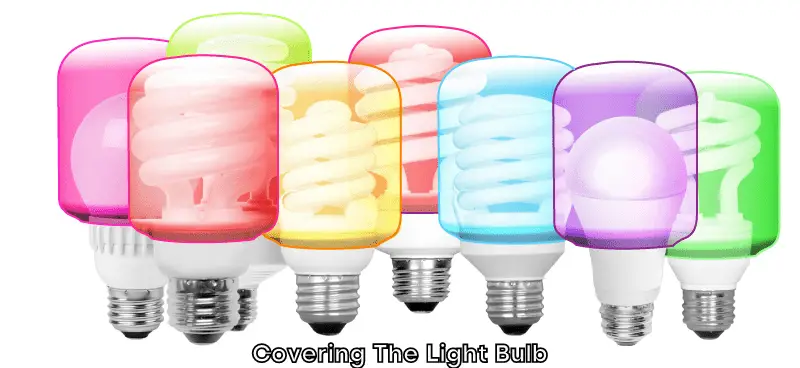
12. Using Heat-Resistant Glass Paint
You can paint the outside surface of your bulbs using glass paint. This will act as a permanent translucent filter on your bulb, thus softening the light.
This solution is permanent, so consider other alternatives before opting for this.
13. Use A Diffuser Foil
Diffuser foils are basically foiled sheets that can be placed directly against lighting fixtures in order to scatter the light more. This is one of the more affordable solutions out there.
Tips to Diffuse Your Bright LED Lights
- Before you even purchase your light, take a careful look at the volume of the area you’ll be installing the light. Using too powerful of light in too small of a room can be avoided this way.
- Avoid installing the lights around your eye line. This is why most room lights are usually on the ceiling or high up on the wall.
- Before installing your light, take a look at how you’ve placed your furniture around the room. Putting furniture right in front of your lights will greatly hamper how well your light scatters.
- If you’re lighting a room that has multiple purposes, try going for a light that can serve all those purposes. For example, if you’re using a room for both work and relaxing, consider using a dimmable or color-changing light. This way, you can change the lighting setting according to your need.
- A lot of times, you can use objects lying around as a makeshift cover or a diffuser. Colored plastic bottles can make a great diffuser.
- Modern lampshades are made of heat-resistant fabric. If you have some fabric lying around, consider making a DIY lampshade.
- If you’re working under intense lights, consider taking a break every 20-30 minutes to give your eyes and mind some rest.
- Consider purchasing some glasses with blue light filters. This will give you additional protection.
- If one light is too bright and focused for you, try installing multiple bulbs of lower wattages in opposing directions of the room.
Is Too Much Bright Light Harmful for Your Eyes?
The reason why you need to start thinking about how to soften LED lights is the fact that lights which are too bright can definitely be harmful to you.
Prolonged exposure to intense bright lights can permanently damage your retina and can even cause more serious issues such as eye cell degeneration as well as partial blindness.
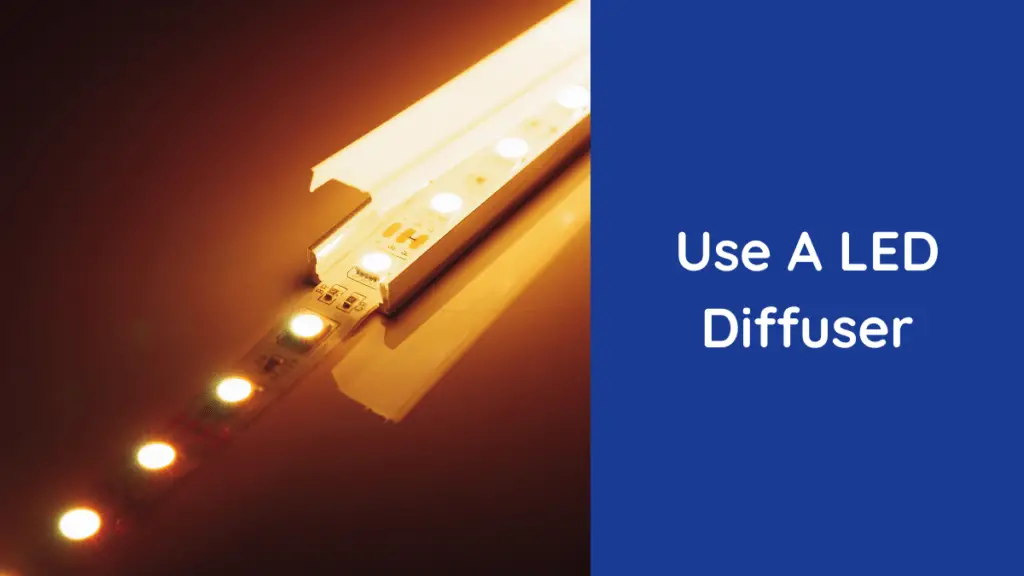
Bright lights can also contribute to stress, anxiety, headaches, etc.
Why Do You Need Warm Light?
Compared to cooler lights, warm lights are more suitable for you when you need to relax and feel calm.
Research has shown that lights with yellow or orange undertones help release certain hormones in our brain that help us wind down and feel cozy and comfortable.
This is why it is often recommended that areas that want to promote a calming environment such as bedrooms, bathrooms, living areas, etc. should always use warm lights for best results.
It is also why warming Christmas lights gives us a cozier and soothing sensation.
How Do You Soften a Light Bulb?
There are many options to consider when discussing how to soften LED lights. If you have an LED bulb that’s dimmable, using a dimmer would be a very easy and convenient solution.
However, if your light isn’t dimmable, using something like a diffuser or a shade are other viable options, as these don’t require tinkering with any electronics.
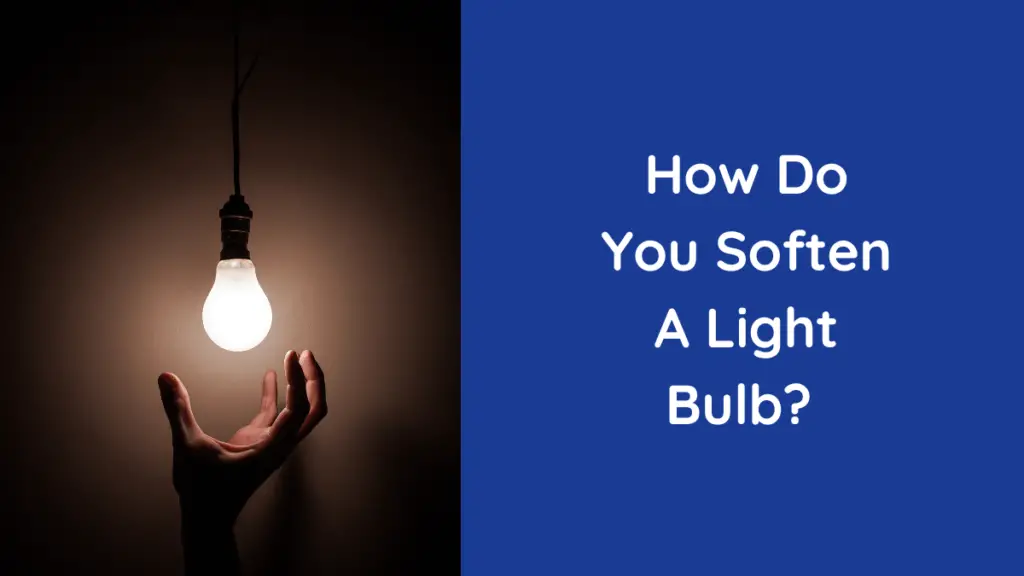
If your problem still persists, consider switching to a bulb with lower wattage. Using a reflector on your bulb can also tone down the intensity of the light.
What To Do If The LEDs Are Blinding?
If your LED lights seem too bright for your comfort, consider some of the options we have provided in our guide on how to soften LED lights.
If your light is connected to a movable fixture, consider pointing the light away from you so that you’ll be in a more ambient setting.
If that is not possible, consider using a dark filter. This will help you tone down the brightness of the light. There are lampshades and diffusers available in the market which will assist in scattering the bright light.
Conclusion
Now that you know everything there is to know regarding how to soften LED lights, consider the options we have provided in order to solve your problem.
LED lights have brought a revolution to the lighting industry through efficient and environmentally friendly technology, however, these lights have some disadvantages too.
Well, the good news is that these disadvantages or problems are not too difficult to solve. Keep an eye on our website for these solutions.
Read Also: How to Wire RGB LED Strip Without Controller
Read Also: How To Make DIY LED Light Colors

My strong expertise is illuminating spaces. With a keen eye for detail and a passion for transforming environments through lighting, my dream is to leave indelible mark on the world of light design. Below are few facts of my biography, highlighting career and hobbies. Click here to contact me.
